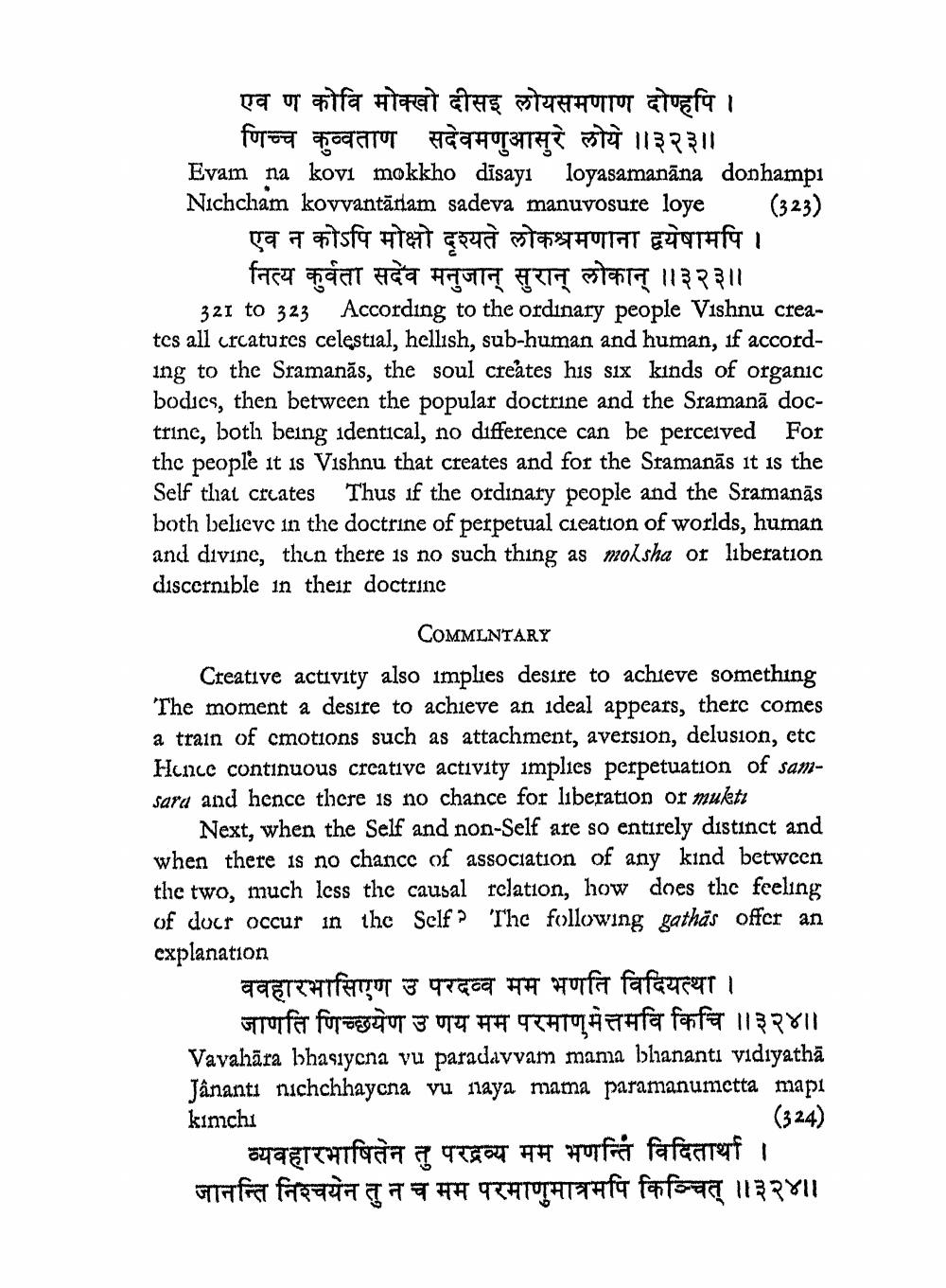________________
एव ण कोवि मोक्खो दीसइ लोयसमणाण दोण्हपि ।
णिच्च कुव्वताण सदेवमणुआसुरे लोये ॥३२३॥ Evam na kovi mokkho dīsayı loyasamanāna donhampi Nichcham kovvantārlam sadeva manuvosure loye (323)
एव न कोऽपि मोक्षो दृश्यते लोकश्रमणाना द्वयेषामपि ।
नित्य कुवंता सदव मनुजान् सुरान् लोकान् ॥३२३॥ 321 to 323 According to the ordinary people Vishnu creates all crcatures celestial, hellash, sub-human and human, if according to the Sramanās, the soul creates his six kinds of organic bodies, then between the popular doctrine and the Sramanā doctrine, both being identical, no difference can be perceived For the people it is Vishnu that creates and for the Sramanās it is the Self that creates Thus if the ordinary people and the Sramanās both believe in the doctrine of perpetual cieation of worlds, human and divine, then there is no such thing as moksha or liberation discernible in their doctric
COMMLNTARY Creative activity also implies desire to achieve something The moment a desire to achieve an ideal appears, there comes a train of cmotions such as attachment, aversion, delusion, etc Honce continuous creative activity implies perpetuation of samsara and hence there is no chance for liberation or mukti
Next, when the Self and non-Self are so entirely distinct and when there is no chance of association of any kind between the two, much less the causal relation, how does the feeling of ducr occur in the Self? Thc following gathäs offer an explanation
ववहारभासिएण उ परदव्व मम भणति विदियत्था ।
जाणति णिच्छयेण उणय मम परमाणमेत्तमवि किचि ॥३२४॥ Vavahāra bhasiyena vu paradavvam mana blianantı vidiyathā Jânanti nichchhayena vu naya mama paramanumctta mapı kimchi
(324) व्यवहारभाषितेन तु परद्रव्य मम भणन्तिं विदितार्था । जानन्ति निश्चयेन तु न च मम परमाणुमात्रमपि किञ्चित् ॥३२४॥




